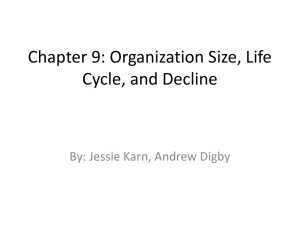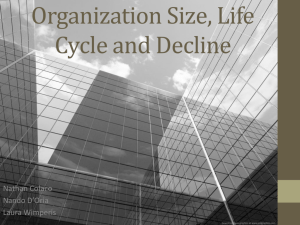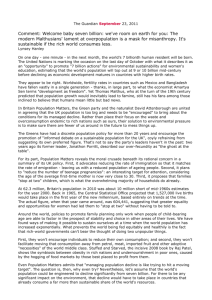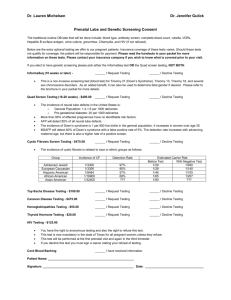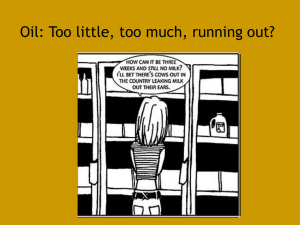Organization Size, Life Cycle, and Decline
advertisement
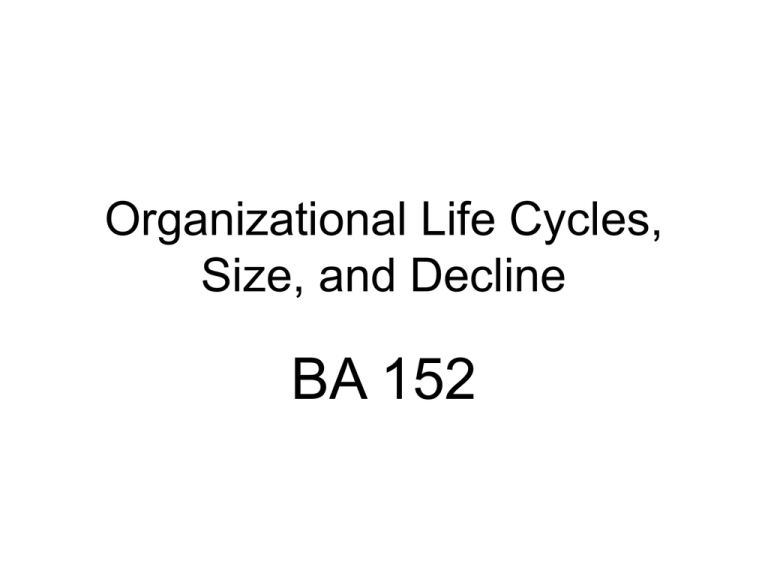
Organizational Life Cycles, Size, and Decline BA 152 Industry Life Cycles Industry Evolution – Entry strategies – First movers Followers Survival strategies Specialist Generalist Entry Strategies Entering the market early – – – Pick of environmental resources Rapid growth Better chances of survival Entry Strategies Entering the market later – – – – Reduces operational uncertainty Correct way to compete is apparent Lower R&D investment Survival as the more efficient producer Survival Strategies Specialists Concentrate skills in a single niche Develop core competencies Can provide better customer service and superior products, but Trouble if the niche disappears or others enter. Generalists Spread skills across many niches Providing greater brand recognition Can succeed when environment is uncertain, If risk is spread across a number of niches Organizational Life Cycle Stages of Life Cycle Development – Pre-Birth Stage first idea commitment and early planning implementation – – – – Entrepreneurial Stage Collectivity Stage Formalization Stage Elaboration Stage Organizational Characteristics During the Life Cycle ENTREPRENEURIAL STAGE: – Personal control systems – Innovation by owner/manager – Goal: Survival – Management style: Entrepreneurial – Crisis: Lack of/Need for leadership Organizational Characteristics During the Life Cycle COLLECTIVITY STAGE: – Personal rewards aimed at individuals who contribute to organizational success – Innovation from employees and managers – Goal: Growth – Management style: Charismatic, directive – Crisis: Lack of/need for delegation Organization Growth: Is Bigger Better? Pressures for Growth – – – – Organization goals Economies of scale Executive advancement Economic health Size and Structural Characteristics As Organizations get bigger: • Complexity increases • Centralization decreases • Formalization increases • Flexibility decreases Large Vs. Small: How can you be both? Structural reorganization (split up) Smaller headquarters staff (decentralize) Subsidiaries/spin-offs that can act small Skunkworks to develop new products Support intrapreneurship within the firm Bigger may not be better! Growth is difficult to maintain. A $100K company has to generate $10K to grow by 10%. A $100B company has to generate $10B to grow by the same 10% In the 1990s, what percentage of publiclytraded firms increased their revenues and profit by an average of 10% a year? Growth can stretch a firm too thin. A 20% growth rate per year means a firm doubles in size in less than four years. Bigger may not be better! What determines a firm’s size? Market Cap? Employees? Profits? Market share? Revenues? The wrong choice can lead to seriously negative consequences. Organizational Characteristics During the Life Cycle FORMALIZATION STAGE: – Impersonal rewards through formalized systems – Innovation from separate innovative groups – Goal: Internal stability/market expansion – Management style: Delegation with control – Crisis: Too much red tape Organizational Characteristics During the Life Cycle ELABORATION STAGE: – Extensive rewards tailored to product and department success – Innovation by institutionalized R & D – Goal: Image/reputation-building – Management style: Team approach – Crisis: Lack of/need for revitalization Organization Life Cycle Large Streamlining Development of Teamwork Size Continued maturity Addition of Internal Systems Provision of Clear Direction Crisis: Too much red tape Creativity Crisis: Need for delegation with control Small Decline Crisis: Need for revitalization Crisis: Need for Leadership Entrepreneurial Collectivity Formalization Elaboration ????????? Organizational Decline and Downsizing: The Causes Organizational Atrophy – – Organizational Vulnerability – – – Loss of ability to respond to changing environment Inefficient, bureaucratic, fat, and happy Loss of resources Loss of market share Loss of legitimacy Environmental decline – – – Stagnating economy Flat/shrinking market Increased competition Stages of Decline Successful Organizational Performance Good Information Acknowledge Decline Major Changes Reorganization No choices Blinded Inaction Faulty Action Crisis Dissolution Managing the Downsizing Implementation approaches must be a function of the severity and speed of decline. Implementation issues to consider – – – – – – Consider voluntary programs with incentives (but be careful - who might leave?) Over communicate - “The best surprise is no surprise.” Allow employees to leave with dignity Assist those leaving Use ceremonies to reduce anger/confusion Remember those who stay! Next Time Sunflower, Inc.
